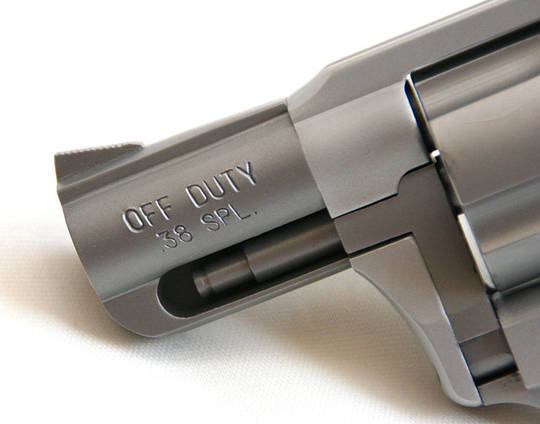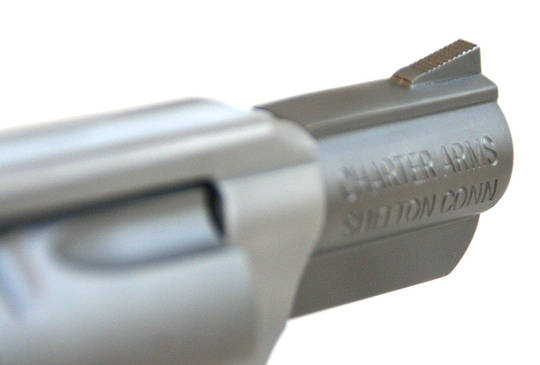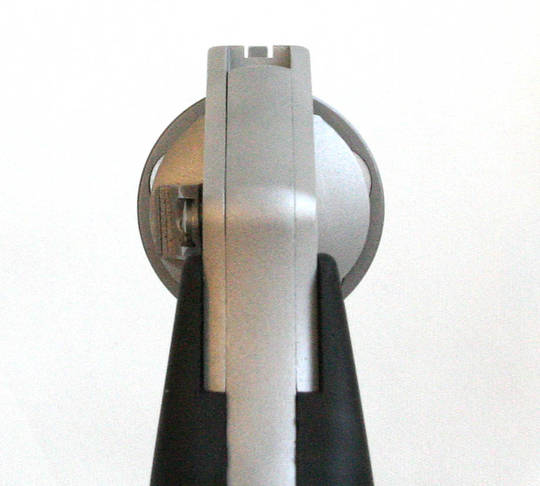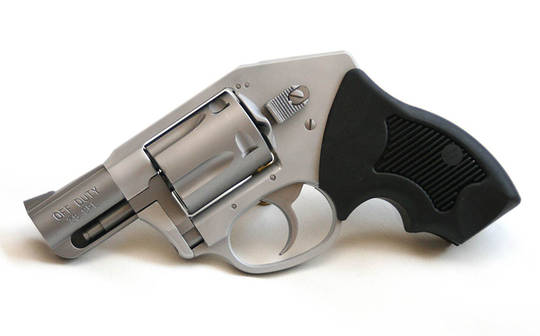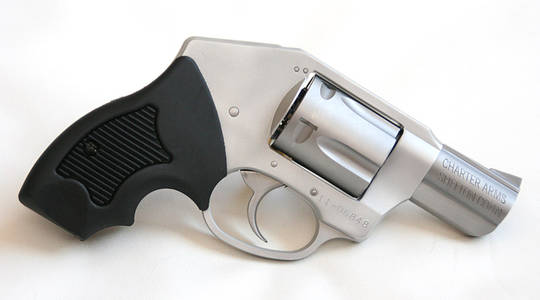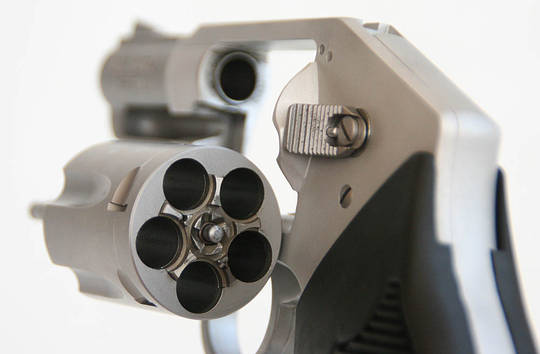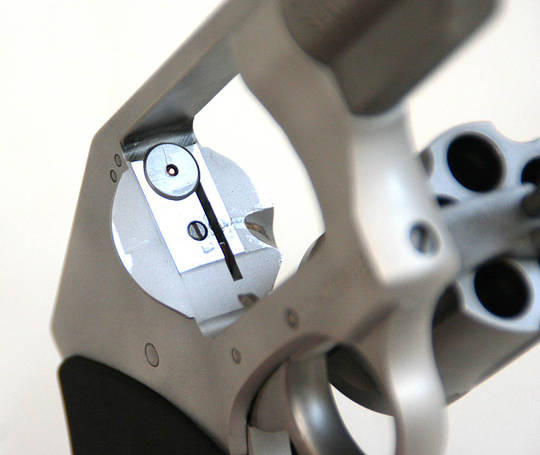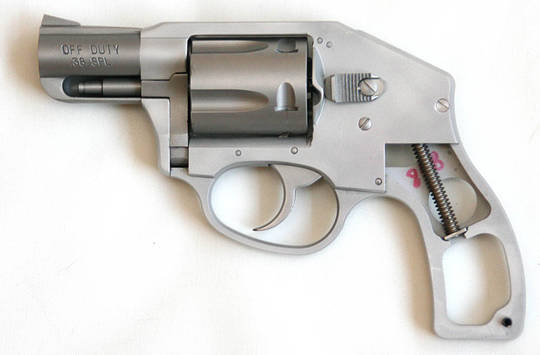Carried by cops and gangsters alike, the snubnose revolver has been a staple for anyone wanting to carry a concealed firearm. Through the years, the short-barreled revolvers have evolved, becoming more refined with each generation.
The Charter Arms Off Duty has all of the features from one line of thinking on what makes the perfect concealed carry handgun.
The Off Duty is a lightweight, double action only (DAO) revolver that utilizes a completely hidden hammer. Although different in many aspects, the Off Duty bears a passing resemblance to the Smith & Wesson 642 revolver.
The frame of the Off Duty is made of aluminum, while the cylinder and barrel are steel. With the exception of the black grips, the entire gun has a flat, stainless steel color.
The sights are fixed, with a ramp front sight and notch rear. Without some serious machining, replacing the stock sights is not possible.
The unloaded weight of the Off Duty is only 12 ounces. This is a full three ounces lighter than the S&W 642 (15 ounces), even with the longer steel barrel on the Charter Arms gun (2” vs. 1 7/8”).
Charter Arms does not use a removable side plate on their revolvers, which is said to increase frame strength. It is likely that Charter is able to leverage the greater frame strength from design to reduce the gun’s weight without resorting to expensive metals like titanium.
The Off Duty’s cylinder rotates clockwise.
The Off Duty is listed as “.38 Special +P” on the website. Reading the instruction manual, Charter Arms states:
“.38 Special ‘plus P’ ammunition should not be used in your Charter Arms revolver. While your revolver can shoot ‘plus P’ ammunition, using such in a short-barrel revolver typically prevents the ammunition for achieving its full performance…”
MSRP is $411, and street prices are typically about $50-75 cheaper than that.
Impressions
When I first picked up the Off Duty, I was immediately impressed by how good it felt in my hand. Small framed guns frequently leave a lot to be desired in hand fitting, but this Charter Arms was surprisingly good for me (and my medium sized hands.) Shooters with large (and very large) hands may not like it as much.
The grips are a hard rubber that seem thicker than other small frame revolvers. The result is a better hand fit without an appreciable impact on concealibility. A nice touch is the wide scallop cut on the bottom of the grips, which allows the pinky finger to gain additional purchase on the handgun.
The finish on the Off Duty was very nice, with no visible blemishes or machine marks. The trigger face was very smooth, without any felt imperfections.
The sights are a nice improvement as compared to my 642. The front sight on the Charter is about the same height, but wider. Additionally, the ramp is shorter, giving the sight a sharper angle than the Smith. These things combined to make the front sight much easier to see.
The rear sight is essentially a notch cut into the frame. The notch on the Charter is a huge improvement when compared to the 642. The Off Duty’s rear sight is both wider and deeper than the Smith, allowing for a significantly faster acquisition of the front sight. I cannot overstate what an improvement this was as compared to my S&W.
Trigger pull, on the other hand, left something to be desired. In the beginning, the pull was very heavy and not smooth. Initially trigger pull weight was above the measurement ability of my Lyman digital scale.
However, I spent some time dry firing the Off Duty, and the trigger began to smooth out fairly quickly. After putting several hundred rounds down range, the trigger improved even more.
The trigger pull did not become as smooth as I had hoped, but it was very useable, and will likely continue to improve as I spend more time shooting the gun.
After shooting, the trigger pull averaged 11 lbs, 7 oz on the same Lyman scale mentioned earlier.
Range Time
I wasn’t sure what to expect when I went to the range with the Charter Arms Off Duty. I figured recoil could be greater than my 642 due to the lighter weight. I also was a little concerned about what my groups may look like due to the trigger pull.
Recoil turned out to not be an issue whatsoever. Felt recoil was less than my 642 with all ammo I ran, both standard pressure and +P. I credit the reduced felt recoil to the grips. The grips do not look fancy, but they sure seem to work.
Accuracy wound up not being a problem at all. I was shooting unsupported at a 15 yard target, and making 2 1/2” to 3” groups fairly easily with the Off Duty. As I mentioned earlier, the trigger smoothed out nicely, and did not distract me at all.
Accuracy was really helped by the sights. The sights were very easy to see and align.
An unexpected bonus to the Charter Arms revolver was the placement of the cylinder release. As compared to the 642, the cylinder release on the Off Duty is slightly higher on the frame. For me, this slight difference, makes a huge improvement.
During recoil, the textured face of the 642’s cylinder release rubs the inside of my shooting hand thumb. After a few dozen shots, this part of my thumb is raw. After about 100 rounds, I’ll need a bandage.
On the Off Duty, the cylinder release never comes in contact with my thumb. Nice…very nice.
Unfortunately, my chronograph was not cooperating at the range, and it gave very unusual readings. For example, with the Magtech 158 gr LRN, it measured an average velocity of 1225 fps (with a high of 1308 fps), which is way outside what I would expect the standard pressure .38 Special is capable of.
Meanwhile, on the Hornady 110 grain Critical Defense, the chronograph measured an average of 422 fps (with a low of 360 fps).
I swapped batteries, reset the settings, made sure it wasn’t in metric, cursed and spat, but I could not get accurate readings for this review.
I did fire more than 10 different loads through this Charter Arms gun, and it was 100% reliable. None of the loads offered poor accuracy at 15 yards.
Case extraction was fairly reliable. I’ve found that most short barreled revolvers will occasionally fail to completely extract a fired case. I believe this is because the ejector rod is shorter than what is found on a full size revolver.
The Off Duty was no different. It would extract the fired brass almost every time without problems. Occasionally, though, one fired case would need to be knocked free by hand. In fairness, I have had to do the same thing with my 642.
None of the fired cases got caught under the extractor.
Pulling It All Together
The Off Duty is a very capable snubnose revolver, and will likely fit the needs of anyone looking for an inexpensive, reliable DAO gun. My gun was 100% reliable and enjoyable to shoot.
The Charter Arms Off Duty turned out to be a very good alternative to the Smith & Wesson “hammerless” series of revolvers. I find this hard to say, but with a slightly smoother trigger, the Charter wins when put up against my Smith 642.
 Your Privacy Choices
Your Privacy Choices
